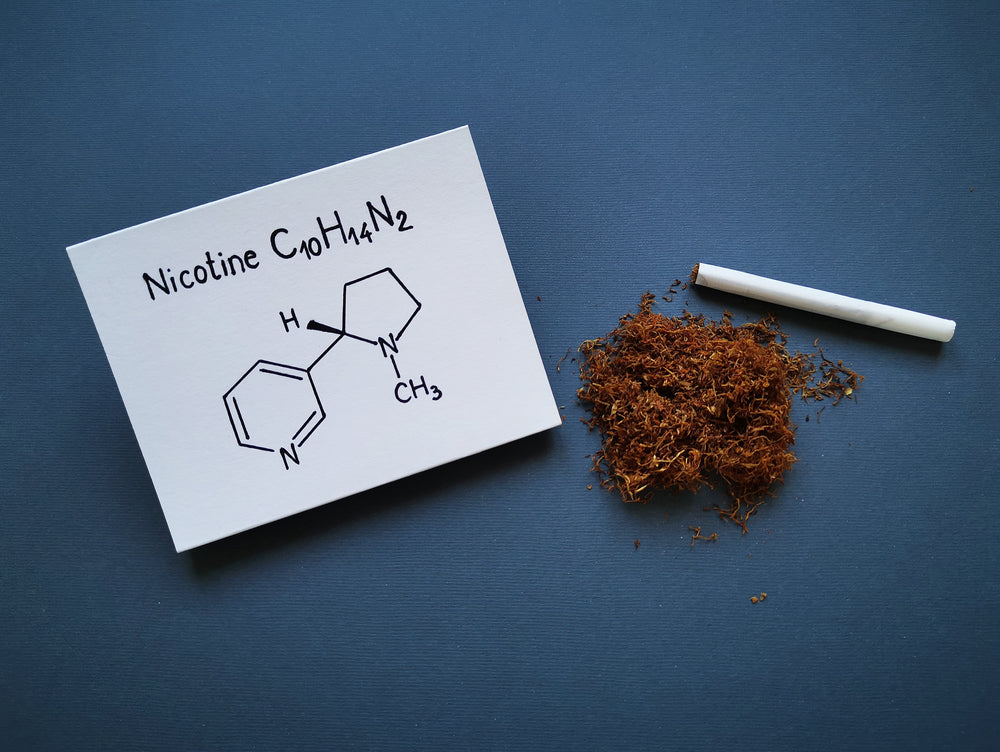In oral tobacco products like chewing tobacco, there is a distinction between nicotine content and perceived strength, as the latter depends on multiple factors. Previously, the nicotine content was clearly stated on the cans of chewing tobacco. However, due to a change in regulations, manufacturers are now required to indicate the strength but not the exact nicotine content on the packaging.
In our article, we aim to answer the most important questions about the nicotine strength of chewing tobacco and introduce you to some products along with their nicotine content.
How are the different types of chewing tobacco or snus categorized?
On the cans of chewing tobacco products, whether loose or in pouches, you will first find descriptions like 'normal, strong, very strong, and extremely strong.' According to these descriptions, chewing tobacco is categorized as follows:
- 0 to 9 mg/g nicotine = Normal chewing tobacco / snus
- 10 to 20 mg/g nicotine = Strong chewing tobacco / snus
- 20 to 30 mg/g nicotine = Very strong chewing tobacco / snus
- Over 30 mg/g nicotine = Extremely strong chewing tobacco / snus
Additionally, there are varieties like edelsnus CBD Mint that are completely nicotine-free. These are suitable not only for smokers planning to quit smoking. If you're interested in the exact nicotine content of a variety, you can check the product page under properties. On our website, the content is listed in mg of nicotine per gram of product.
How does nicotine get into chewing tobacco?
The tobacco plant naturally contains nicotine, so all tobacco products contain nicotine. The nicotine content of the plant varies depending on the variety, with commercial varieties having around 0.5 to 3%, while others can contain more than 8% nicotine. Furthermore, not only the variety matters but also the weather conditions, fertilization, and plant density.
For the production of chewing tobacco, the tobacco is ground and mixed with water, salt, and flavorings. It is then packed loose in cans or in cellulose pouches. During use, the pouch is placed under the upper lip, and the nicotine is absorbed through the mucous membranes in the mouth.
All White nicotine pouches contain nicotine but are completely free of tobacco. In their production, the nicotine is extracted from the tobacco plant and then added to the product either in liquid form or as nicotine salt. This has the advantage that the chewing tobacco does not drip when consumed, and the teeth do not get stained.
Chewing tobacco nicotine vs. cigarettes
It's often said that chewing tobacco has a higher nicotine content than cigarettes. However, this cannot be answered so generally. The nicotine content of chewing tobacco varies by variety and can even be nicotine-free. A cigarette contains 12 mg of nicotine, and 1 to 3 mg are absorbed when smoking.
In strong chewing tobacco varieties, the nicotine content is over 30 mg/g, but not all the nicotine is absorbed by the body. The proportion that enters the body is about 10 to 20%.
Chewing tobacco nicotine content vs. perceived strength
The actual strength of chewing tobacco depends not only on nicotine but also on moisture, pH level, and flavor. Moist chewing tobacco runs more and reaches the brain faster. However, its effect doesn't last as long as dry chewing tobacco. Additionally, flavors like mint can increase the perceived strength and provide an extra freshness kick. The pH level indicates how much nicotine can be absorbed by the body. The higher the value, the more is absorbed.
What are the strongest chewing tobacco varieties?
Among the strongest chewing tobacco varieties are Siberia, Offroad, T45, and Soldat. Siberia Rot -80 Degrees, for example, has a nicotine content of 43 mg/g. This variety is only suitable for experienced users and should not be tried by beginners.


